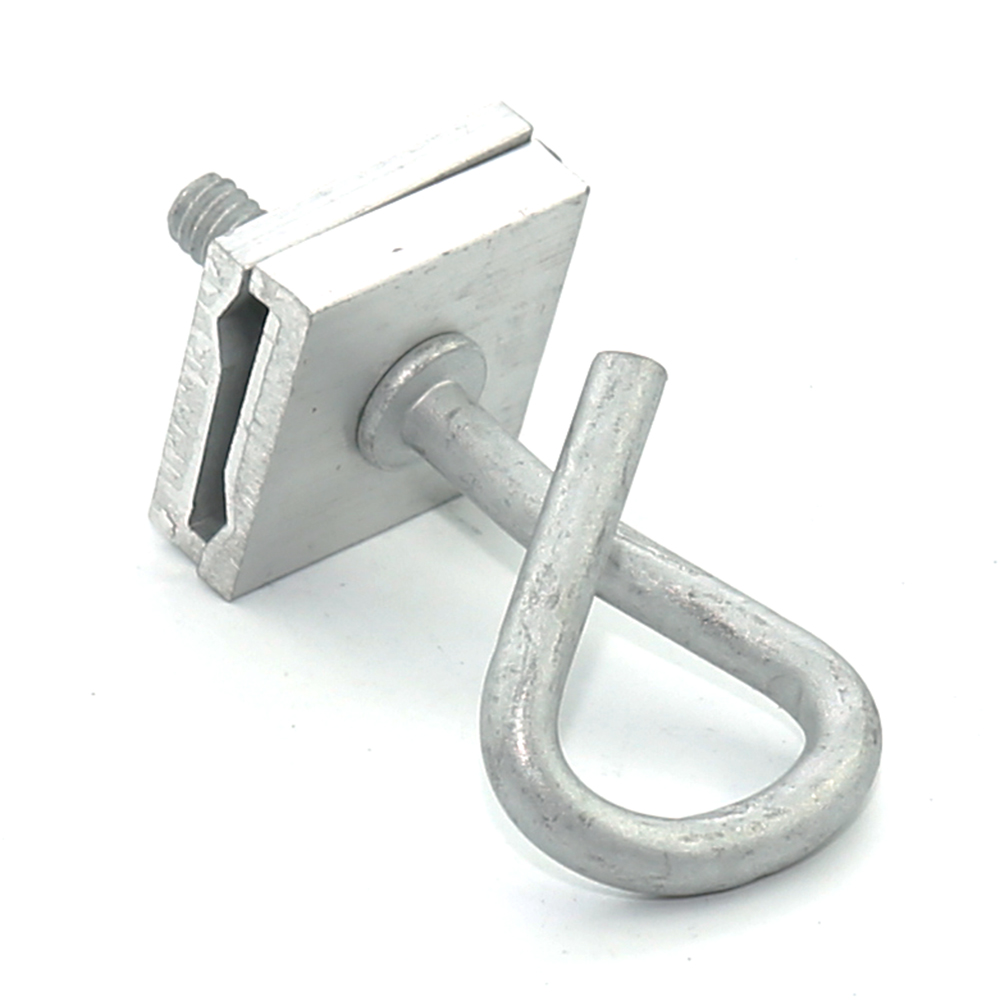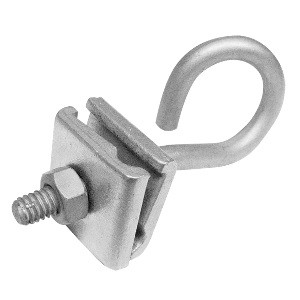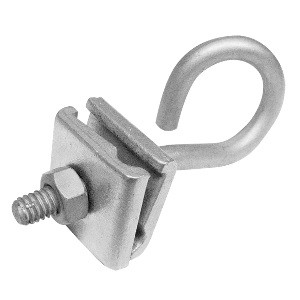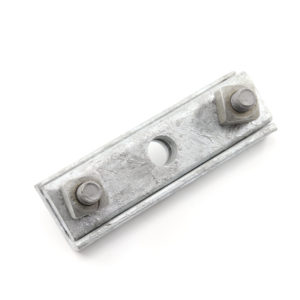
A span clamp is a device used to support and secure electrical conductors, cables or wires between two points. Its design has a metal body with grooves to hold the conductors in place. The clamp also features bolts and other fasteners to tighten and secure the conductor within the clamp. Span clamps have insulating materials that prevent electrical conductivity. Use of these clamps ensure the stability and integrity of the conductor. This is while withstanding environmental factors like wind, temperature fluctuations and mechanical stress. Span clamps are from durable materials such as stainless steel and aluminum. The clamps work in applications such as distribution lines, telecommunication and transmission lines.
Benefits of using span clamp in your application
Using span clamps in transmission lines improves the reliability, efficiency and safety of the grid. This is by providing secure and effective support for conductors to the transmission lines. span clamps also provide simple installation and lead to ease of maintenance. The following are the various benefits of using span clamps.

- Support and stability – span clamps maintain cable tension to help keep the lines rigid and prevent sag. They also reduce vibrations caused by wind or other disturbances to protect the integrity of the lines.
- Reliability and safety – span clamps ensure tight and secure connections between the lines and support structures. They are also able to withstand various weather conditions and contribute to system reliability.
- Flexibility – the clamps have designs to span a distance between support structures like utility poles or towers. This is to allow for flexibility despite the various factors such as terrain and other constraints.
- Adjustability – adjustable designs allow for fine-tuning the tension and positioning of the conductor. This helps to enhance the performance of the transmission line and compensate for environmental changes.
- Ease of installation – use of span clamps requires minimal tools and equipment to streamline the installation process. This also helps reduce the labor costs and project timelines.
- Durability – span clamps are from durable materials such as galvanized steel or aluminum. These materials are resistant to corrosion and environmental degradation. They also ensure long-term reliability and performance of the transmission lines.
- Insulation – the clamps have insulating materials to prevent electrical conductivity. This also helps to reduce the risk of electrical faults and ensures the safety of line workers.
Certifications for mid-span clamp
There are various certifications that ensure the span clamps adhere to industry standards and regulations. These certifications relate to materials, designs and manufacturing processes of the products. The certifications also help to ensure quality, safety and performance for various applications. Additionally, it is important to consult with local authorities for guidance on certifications. The following are the various certifications for span clamps.

- ISO certification – this is a quality management system certification that ensures the manufacturers processes meet international standards.
- UL listing – this is a safety certification organization that evaluates and certifies products for compliance with safety standards. UL listings apply to the materials or components used in their construction.
- CSA certification – this provides certification services for products related to electrical and construction applications such as span clamps.
- CE marking – span clamps must follow CE marking requirements indicating conformity with health, safety and environmental protection standards.
- ASTM standards – this is a standard that establishes standards for materials and products used in construction and engineering.
- NEC compliance – span clamps must follow NEC standards which govern the safe installation of electrical wiring and equipment.
- IEC standards – these are standards that establish international standards for electrical and electronic technologies. This may apply to aspects of span clamp design and performance.
Types of testing for span clamps
Span clamps undergo different types of testing to ensure they comply to standards and performance specifications. They also help to ensure the span clamps are reliable, durable and safe for use in various applications. They also provide assurance to users and regulatory authorities of their quality and performance. Also, it important to consult with industry experts for guidance on the testing the selected clamp has to undergo. Discussed below are the various types of testing for span clamp.

- Mechanical testing – this involves putting the span clamps to mechanical stresses. This is to check its strength and resistance to deformation. These include tension testing, compression testing, bending testing and impact testing. They help to check how the span clamp performs under different loading conditions.
- Corrosion testing – this is evaluating the resistance of the span clamp to corrosion. Corrosion degrades the clamps’ performance and durability. The tests include spray testing, humidity testing and accelerated aging tests.
- Environmental testing – this checks the performance of span clamp under various environmental conditions. These include temperature extremes, UV exposure, moisture and vibration.
- Regulatory compliance testing – this test is to show compliance with industry standards and regulations.
- Material testing – this involves analysing the properties of the materials used in the span clamp such as metal alloys. The tests may include tensile testing, hardness testing and metallurgical analysis. They are to ensure the materials meet specified standards and performance requirements.
- Electrical testing – this checks the electrical properties of the span clamp. This is including insulation properties. Tests include dielectric strength testing, insulation resistance testing and leakage current testing. They ensure the clamp meets electrical safety standards and prevents electrical faults.
- Fit and function testing – this involves assessing how the clamp fits and functions within the application. The tests include assembly testing, dimensional verification and operational testing. They help to ensure the clamp performs as intended and meets installation requirements.
Factors to consider when checking the costs of span clamps
It is important to consider several factors to ensure value for your money for a product that meets your requirements. there are various factors that influence the costs of span clamps that meet your budget. Additionally, it is advisable to check with manufacturers and dealers for prices catalogs. The following are the factors that influence the costs for a span clamp.

- Material – the material used in the manufacturer of the clamp impacts its costs. Common materials include galvanized steel, stainless steel, aluminum and composite materials. The selected material depends on factors such as durability, corrosion resistance and environmental conditions.
- Design – some clamps may have specialized designs, adjustable features and extra functionalities. Insulating properties and corrosion resistant coatings may increase the cost of the clamp.
- Brand and manufacturer – consider the reputation of the brand and manufacturer which can influence the cost of the clamps. Established brands with a history of producing high-quality products may demand higher prices.
- Supplier and distribution channel – direct purchases from manufacturers may offer cost savings. This is as compared to purchasing through third-party distributors.
- Size and capacity – span clamps come in various sizes and capacities to hold different conductor sizes and loads. Larger and higher capacity clamps costs more than the smaller ones. This is due to the increased material and manufacturing requirements.
- Quantity – purchasing span clamps in bulk orders may be eligible for volume discounts or reduced costs.
- Certification – span clamps that meet specific certifications and standards may cost more. This is due to the extra testing, quality control and compliance measures involved.
- Warranty – span clamps with warranties, after-sales support and technical help can influence the value of the clamp.
- Shipping and logistics – large or heavy clamps may need special handling or transportation arrangements that influence the costs.
Sizes and diameters of span clamps
Span clamp sizes and diameters vary depending on the specific application and type of conductors they are to support. They can be available in a range of sizes to hold different conductor diameters and loads. Also, it is advisable to select suitable size and diameter range to ensure a secure and reliable fit for the conductors. The specific diameter range depends on various factors. These include type of conductor, application voltage and expected mechanical loads. The following are the sizes and diameter ranges for span clamps.

- Small – small span clamps find use in supporting smaller diameter conductors used in low-voltage lines. they have a diameter range of 4.8mm to 12.7 mm.
- Medium – these clamps support medium diameter conductors used in power lines or telecommunications. The diameter ranges from 12.7mm to 25.4mm.
- Large – these clamps have designs for supporting larger diameter conductors used in high-voltage transmission lines. The diameter ranges from 15.4mm to 50.8 mm.
- Adjustable – span clamps with adjustable designs allow for flexibility. This hlps in holding a range of conductor diameters within a certain size range.
- Custom size – these are span clamps with designs to meet specific requirements for conductor diameters, load capacity or application.
Frequently asked questions
A span clamp is a device used to support and secure electrical conductors, cables or wires between two points. Its purpose is to provide a secure attachment point for the conductor.
Span clamps are from materials such as galvanized steel, stainless steel, aluminum or composite materials. The selected material should offer durability, corrosion resistance and environmental suitability.
Common sizes and diameter ranges for span clamps include small, medium, large, adjustable or custom made for specific requirements.
